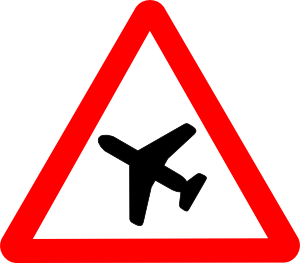Gersh was quick to point out that this is not an intended SOP for this bird. The switch has to happen on an airfield, and the wings should never be down on a roadway except in an emergency. The main uses for driving the Transition will be getting to and from the airport, dodging inclement weather, and getting bizarre looks from other drivers. The first two are no joke: hangar fees are high and climbing, and a quarter of all weather-related accidents are fatal. Ok, enough with the disclaimer - let's get to the fun stuff.
On the state side of things, Gersh told me the bit about Alaska and Montana was something they'd been told anecdotally and wasn't too sure about the regs. It's entirely plausible that the bush pilot capitol of the US and the only State with (at one time) no speed limit on some of its roads would be open to that kind of thing, but I'm slowly developing a need for written rules. I dug into this problem a bit and found that many of the state and local governments that regulate most of the roadways in this country have actually had the foresight to deal with whether they may be used as runways. Click here for a table with the statutes I've been able to compile so far, and feel free to shoot me an email if you know about regulations I've missed or mischaracterized in your state. They fall into roughly four categories: free use (within local rules), use by permission, local ordinances authorized, or no use at all. The "by permission" category leads the race right now. States have gotten pretty creative in highway/runway enforcement on a couple of occasions, like the time a Minnesota State Trooper found a pilot and landscaper's aircraft intentionally parked on a roadside, advised the pilot that he would be cited for driving an overly wide vehicle, and allowed him to take off using the highway as a runway. (*3) Regardless, even states like Montana and Alaska don't seem to have put these rules to much use yet. Props to those states that have seen this coming - all eyes will be on them to see how they handle tomorrow when it arrives.
 |
| Shown here over a perfectly tolerable commute. |
 All that said, Terrafugia's next project, the TF-X, blows these regulatory questions out of the water. As Gersh said in the interview, this really is a Jetson-like machine, and their aspirations for its operation are nothing short of science fiction.
All that said, Terrafugia's next project, the TF-X, blows these regulatory questions out of the water. As Gersh said in the interview, this really is a Jetson-like machine, and their aspirations for its operation are nothing short of science fiction.
---
*1 Dep't of Transp. (D.O.T.) Fed. Aviation Admin., 2011 WL 3557314 (D.O.T. Aug. 8, 2011). You'll need a subscription to access it on Westlaw.
*2 See, e.g., Administrator v. Schwandt, 7 N.T.S.B. 1375 (1991) (finding that a pilot who landed his aircraft while other people were in close proximity to the landing site operated the aircraft in a careless or reckless manner); Administrator v. Hart, 6 N.T.S.B. 899 (1988) (finding that the minimum-altitude-flight regulations are violated when an aircraft descends in order to land at non-suitable landing site); Administrator v. Mollis, 2 N.T.S.B. 43 (1973) (finding that a pilot violated the pertinent regulations when he made a decision to land on a highway, which ultimately resulted in his aircraft colliding with a truck).
*3 State v. Sherbrooke, 633 N.W.2d 856, 859 (Minn. Ct. App. 2001).
*4 It was an absolute treat to talk to Richard - many thanks to Terrafugia for setting up the interview. I'll be using other portions of this interview throughout the rest of this series.



